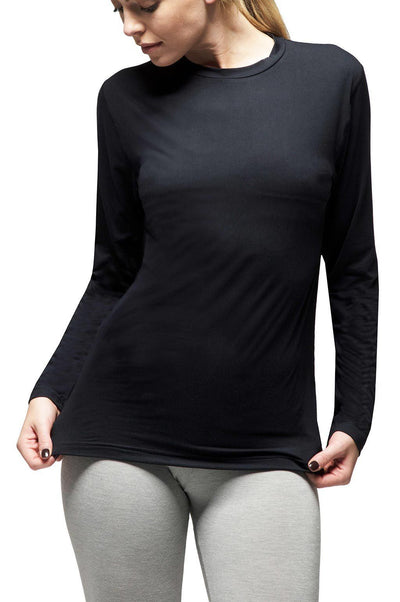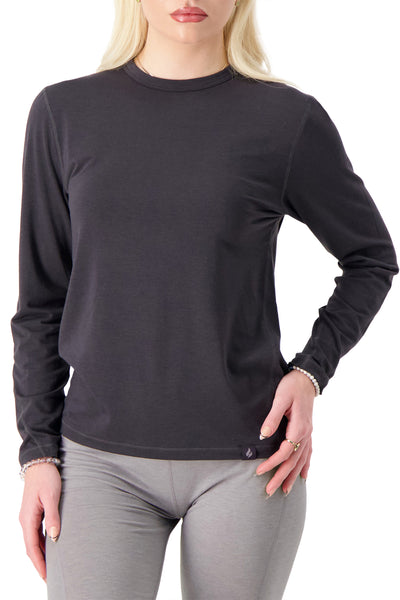When the temperature drops and winter sets in, keeping warm becomes a top priority. One effective way to combat the cold is by wearing thermal heat retention clothing. These specially designed garments work by trapping and retaining body heat, providing insulation and comfort even in extremely cold conditions. In this article, we will explore the science behind thermal heat retention clothing, the different types available, the benefits they offer, and how to choose the right ones for your needs.
Understanding the Science Behind Thermal Heat Retention Clothing
At the core of thermal heat retention retention clothing is the principle of insulation. Insulation acts as a barrier, preventing heat loss and maintaining a warm microclimate close to the body. This is accomplished through the use of special materials that have excellent thermal properties.
Thermal heat retention clothing is not just about keeping you warm; it's about understanding the science behind it. By delving deeper into the concepts of insulation and heat retention, we can appreciate the engineering marvel that goes into creating these garments.
The Role of Insulation in Thermal Clothing
The insulation in thermal clothing is typically made from materials such as fleece, down, or synthetic fibers. These materials have a high loft, meaning they can trap air and create a layer of insulation. Air is a poor conductor of heat, which means it minimizes the transfer of heat from your body to the surroundings.
Imagine tiny air pockets within the fabric of your thermal clothing, acting as a shield against the cold. These air pockets create a barrier that prevents the warmth generated by your body from escaping, keeping you cozy and comfortable even in freezing temperatures.
In addition to trapping air, insulation also works by effectively preventing heat from escaping through conduction, convection, and radiation. Conduction occurs when heat is transferred through direct contact with a colder surface, while convection is the movement of heat through a liquid or gas. Thermal clothing minimizes both of these processes, keeping you warm and comfortable.
Think of insulation as your bodyguard against the cold. It shields you from the harsh elements, allowing you to enjoy outdoor activities without worrying about shivering in the chilly air.

How Heat Retention Works in Thermal Wear
Heat retention is another crucial aspect of thermal clothing. It involves the ability of a garment to hold onto the heat generated by your body and prevent it from dissipating. This is achieved through the use of special fabrics that have good heat retention properties.
Thermal clothing often utilizes fabrics with high insulation values, such as microfibers or materials with brushed interiors. These fabrics create a barrier that traps heat close to the body, allowing you to maintain a comfortable temperature even in chilly conditions.
Imagine wearing a thermal garment that not only keeps you warm but also feels incredibly soft against your skin. The brushed interior of the fabric enhances heat retention while providing a luxurious and cozy feel.
Heat retention is like having a warm embrace from your clothing. It ensures that the heat your body produces stays close to you, creating a microclimate that shields you from the cold and allows you to enjoy outdoor activities without feeling the chill.
So, the next time you slip into your thermal clothing, take a moment to appreciate the intricate science behind it. From insulation to heat retention, these garments are designed to keep you warm, comfortable, and ready to embrace the great outdoors.
Different Types of Thermal Clothing
Thermal heat retention clothing encompasses a wide range of garments designed to provide warmth and comfort in cold weather. Let's explore some of the key pieces that are commonly used:
Thermal Underwear: A Baselayer Essential
Thermal underwear serves as the foundation of any cold-weather outfit. It is typically worn as a base layer, directly against the skin. Thermal underwear is designed to wick away moisture from the body, keeping you dry and preventing a buildup of sweat, which can make you feel cold and uncomfortable.
When it comes to thermal underwear, there are various materials to choose from. Merino wool, for example, is a popular choice due to its excellent insulation properties and natural moisture-wicking abilities. It is also known for being soft and comfortable against the skin, making it an ideal choice for those with sensitive skin.
In addition to merino wool, synthetic materials such as polyester and nylon are also commonly used in the production of thermal underwear. These materials are known for their durability and ability to retain warmth, even when wet. They are often blended with other fabrics to enhance performance and provide a snug fit.
The Importance of Thermal Socks and Gloves
Extremities such as the hands and feet are particularly vulnerable to cold temperatures. Thermal socks and gloves play a crucial role in keeping these areas warm and protected. They are often created with special insulation and moisture-wicking properties to ensure maximum comfort and warmth.
When it comes to thermal socks, there are various styles and thicknesses available to suit different activities and temperature ranges. Some thermal socks are designed specifically for outdoor activities such as hiking or skiing, providing extra cushioning and support. Others are more lightweight and suitable for everyday wear.
Thermal gloves, on the other hand, come in a variety of designs to cater to different needs. Some gloves are touchscreen compatible, allowing you to use your smartphone or other devices without having to remove them. Others are designed with reinforced palms and fingers for added durability and grip.
It's worth noting that thermal socks and gloves are not only useful in cold weather but can also be beneficial in other situations. For example, they can be worn during outdoor activities such as camping or fishing, where the temperature may drop significantly during the night.
Benefits of Wearing Thermal Clothing
Now that we understand the science behind thermal clothing and the different types available, let's explore the benefits they offer:
Staying Warm Without Bulky Layers
One of the main advantages of thermal clothing is its ability to provide warmth without the need for multiple bulky layers. The insulation and heat retention properties of thermal garments mean you can stay comfortable and cozy with less bulk, allowing for greater freedom of movement.
Imagine being able to enjoy the winter season without feeling weighed down by heavy coats and sweaters. With thermal clothing, you can say goodbye to the hassle of layering up and still stay warm. Whether you're going for a walk in the snow or participating in winter sports, the lightweight nature of thermal garments allows you to move with ease.
Furthermore, the slim profile of thermal heat retention clothing makes it an ideal choice for layering under your regular clothes. You can wear your favorite outfits without sacrificing warmth, as thermal garments provide an extra layer of insulation without adding bulk.
Enhancing Comfort in Cold Weather
Thermal heat retention clothing not only keeps you warm but also enhances overall comfort in cold weather. The special fabrics used in these garments are often soft and breathable, providing a cozy and pleasant wearing experience.
Imagine the feeling of slipping into a thermal heat shirt that feels like a gentle hug against your skin. The softness of the fabric adds an extra level of comfort, making you feel pampered even in the harshest winter conditions.
Additionally, many thermal garments are designed to be moisture-wicking, keeping you dry and preventing the chill caused by dampness. This feature is especially beneficial during activities that make you sweat, such as skiing or snowboarding. The moisture-wicking properties of thermal clothing ensure that your body stays dry, reducing the risk of discomfort and potential health issues caused by wet clothing.
Furthermore, the breathability of thermal clothing allows for proper ventilation, preventing overheating and excessive sweating. This helps regulate your body temperature, keeping you comfortable throughout the day.
Choosing the Right Thermal Clothing for Your Needs
When it comes to staying warm in cold weather, thermal heat retention clothing is a must-have. Whether you're planning a winter hike, hitting the slopes, or simply trying to stay cozy during everyday activities, choosing the right thermal wear is essential. But with so many options available, how do you know which one is right for you? Let's dive into some key considerations to help you make an informed decision.
Factors to Consider When Buying Thermal Wear
- Your activity level and the intensity of cold weather.
- Are you planning to engage in high-intensity outdoor activities like skiing or snowboarding? Or do you need thermal clothing for everyday wear during chilly winters? Understanding your activity level and the intensity of cold weather you'll be facing is crucial in determining the level of insulation you need. The intended use of the garment (casual wear, outdoor activities, sports, etc.).
- Thermal heat retention clothing is designed for various purposes. Some garments are specifically tailored for outdoor activities, providing extra durability and flexibility. Others are more suitable for casual wear, offering comfort and style. Consider the intended use of the garment to ensure it meets your specific needs. The fit and comfort of the garment.
- No matter how warm a thermal garment is, if it doesn't fit you well or isn't comfortable, it won't serve its purpose effectively. Look for clothing that offers a snug fit without being too tight, allowing for easy movement. Additionally, consider features like moisture-wicking properties and soft inner linings for enhanced comfort. The durability and quality of the materials.
Investing in high-quality thermal clothing is essential for long-lasting warmth and performance. Check for garments made from durable materials that can withstand the rigors of outdoor activities. Look for features like reinforced stitching, windproof and waterproof properties, and insulation technologies that provide optimal warmth.
Understanding the Different Levels of Thermal Protection
Thermal wear is often categorized into different levels of thermal protection, which indicate the garment's ability to provide insulation and warmth. It's important to understand these levels, as they can guide you in choosing the appropriate clothing for the desired temperature range.
Level 1: Lightweight insulation for mild temperatures. These garments are perfect for cool spring or fall days when you need a little extra warmth without overheating.
Level 2: Midweight insulation for moderate temperatures. These garments are ideal for colder days or when engaging in activities that generate moderate heat, such as hiking or skiing.
Level 3: Heavyweight insulation for extreme cold. These garments are designed to keep you warm in freezing temperatures and harsh conditions. They are suitable for activities like ice climbing or winter camping.
By understanding the different levels of thermal protection, you can select the right clothing that matches the temperature range you'll be facing, ensuring optimal comfort and warmth.
Care and Maintenance of Thermal Clothing
Proper care and maintenance are essential to ensure the longevity and effectiveness of your thermal wear.
Washing and Drying Tips for Thermal Clothes
It is recommended to follow the manufacturer's instructions for washing and drying your thermal clothing. Generally, it is best to avoid using harsh detergents, bleach, or fabric softeners, as these can damage the garment's insulation properties. Instead, opt for a gentle cycle with mild detergent and air drying, or use a low-temperature setting in the dryer.
Ensuring the Longevity of Your Thermal Wear
To prolong the lifespan of your thermal heat retention clothing, it's important to store them properly when not in use. Avoiding exposure to excessive heat, sunlight, and moisture can help maintain the fabric's insulation properties. Additionally, regular inspection for wear and tear and timely repairs can also contribute to the longevity of your thermal wear.
Conclusion
Thermal clothing serves as a reliable solution for staying warm and comfortable in cold weather. By understanding the science behind thermal clothing, selecting the right garments, and properly maintaining them, you can experience the benefits of insulation, heat retention, and enhanced comfort when facing chilly temperatures. Stay cozy and protected with thermal wear!

















